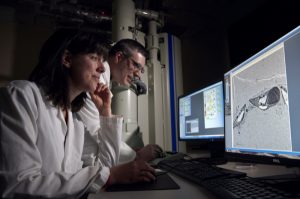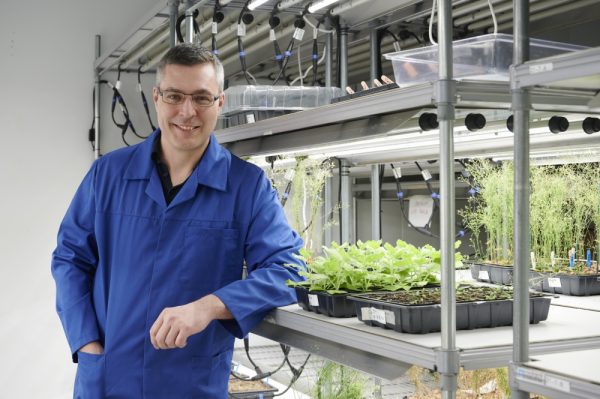

Transmission Electron Microscope helps research to turbo-charge plants' CO2 capture
The McCormick group at the University of Edinburgh is using synthetic
biology to try and turbo-charge photosynthesis in plants using
components from green algae.
To capture CO2 during photosynthesis, plants use an enzyme called Rubisco that operates so poorly that it actually limits yields in most crop plants. In contrast, many green algae have developed a specialised CO2-concentrating mechanism (CCM) in which Rubisco is aggregated into a unique phase-separated compartment inside the chloroplast called the pyrenoid.
The pyrenoid was one of the first subcellular organelles visualised by early microscopes over 100 years ago. Now, efforts to engineer pyrenoid-based CCMs into plants to improve their photosynthesis efficiencies are making use of more advanced microscopy techniques.
Nicky Atkinson, a postdoc from the McCormick group, has been working closely with Steve Mitchell from the School of Biological Sciences’ Transmission Electron Microscope (TEM) facility to develop a pipeline for visualising plant tissue containing a synthetic proto-pyrenoid.
Having characterised the proto-pyrenoid as far as possible by confocal microscopy, TEM became essential to track the introduction of additional components, including a starch sheath and a traversing thylakoid membrane, which will be required to make the CCM fully functional.
Thanks to Steve’s expertise, a protocol for fixing and embedding tissue was rapidly established. Nicky has been able to screen various iterations of the proto-pyrenoid over the course of five years and has employed immunogold labelling of TEM sections in order to visualise the localisation of introduced components.
Steve has also now trained Nicky in the use of the ultramicrotome for creating her own sections, imparting high-level skills that will be fundamental to the McCormick group’s development of plants with enhanced CO2 fixation in future years.

The Transmission Electron Microscope Facility
Specialisms
Technologies available
The TEM facility offers a variety of preparation and imaging services for room-temperature samples, including plastic sections, negative-stain and shadowed materials. Training can be provided.
Equipment available
Our wide range of equipment includes:
More details

Discover the University of Edinburgh's expert Genotype to Phenotype facilities. Our technical experts will help your team make new discoveries and translational developments from genotype to phenotype. Our specialist support will guide you through the journey every step of the way.